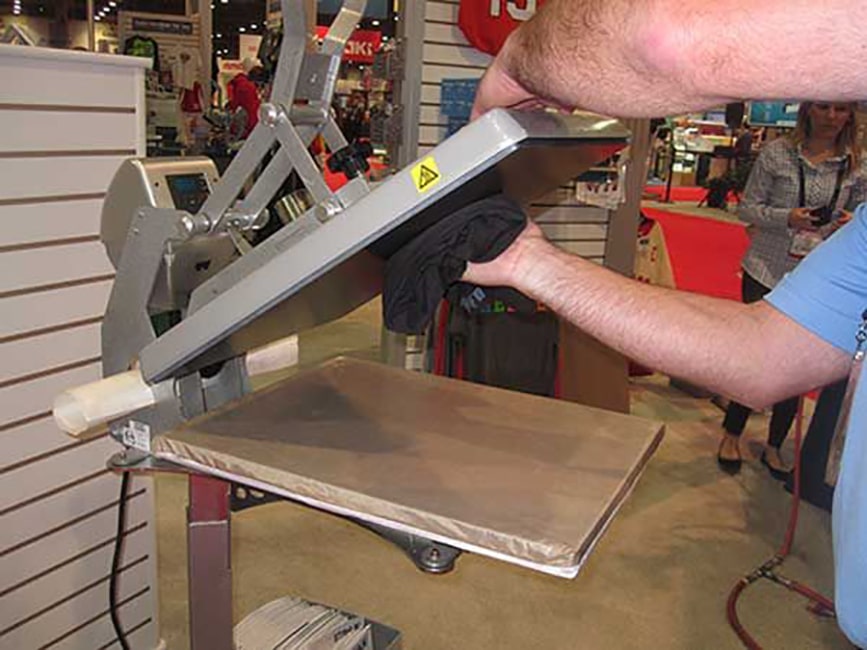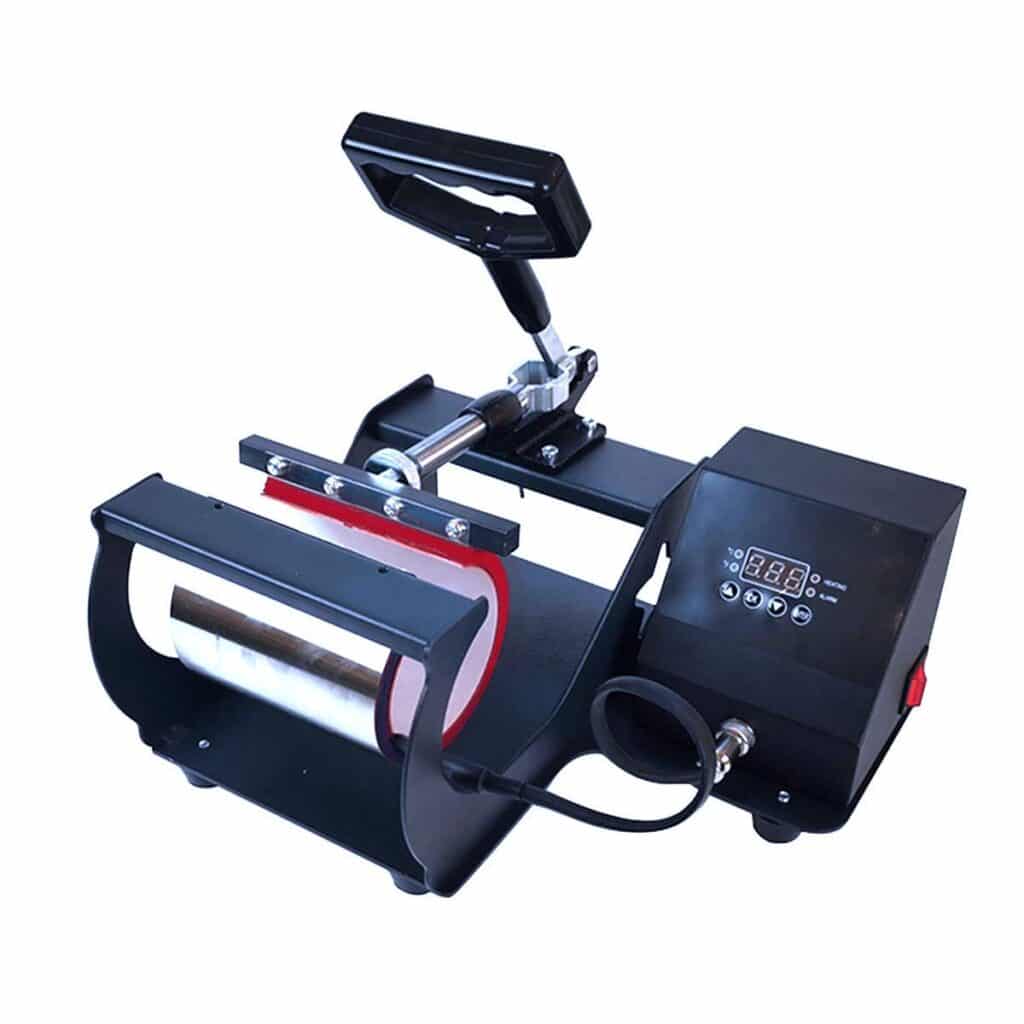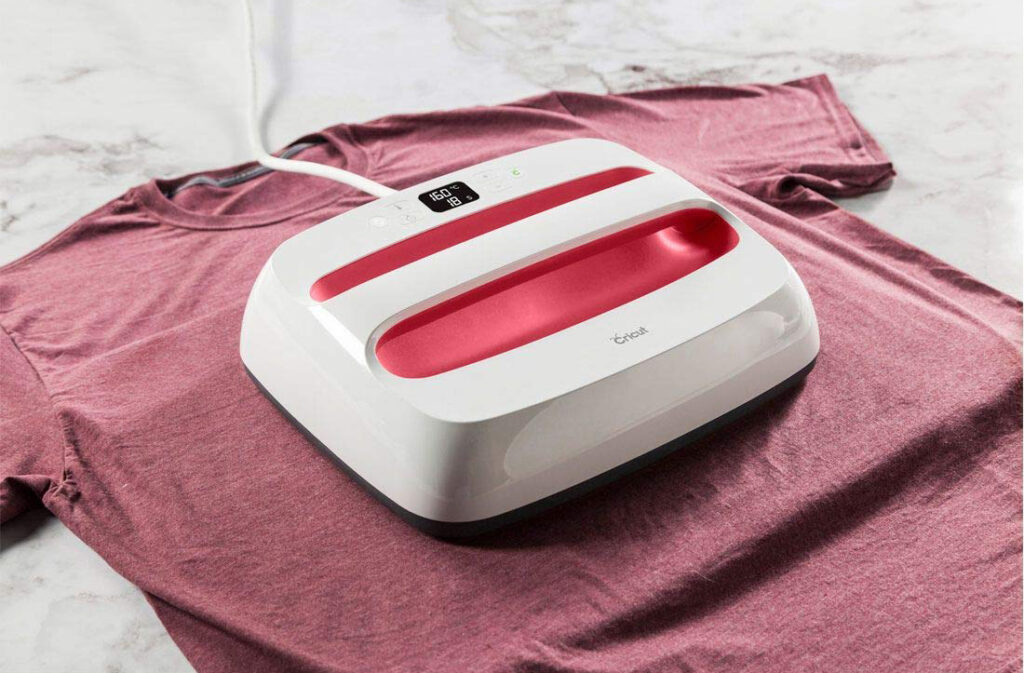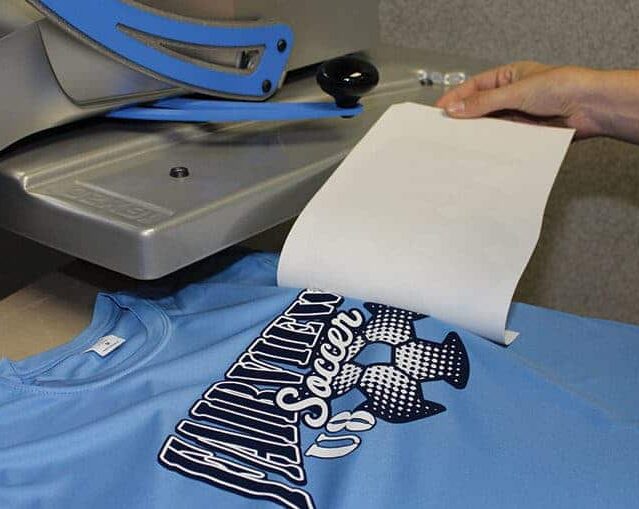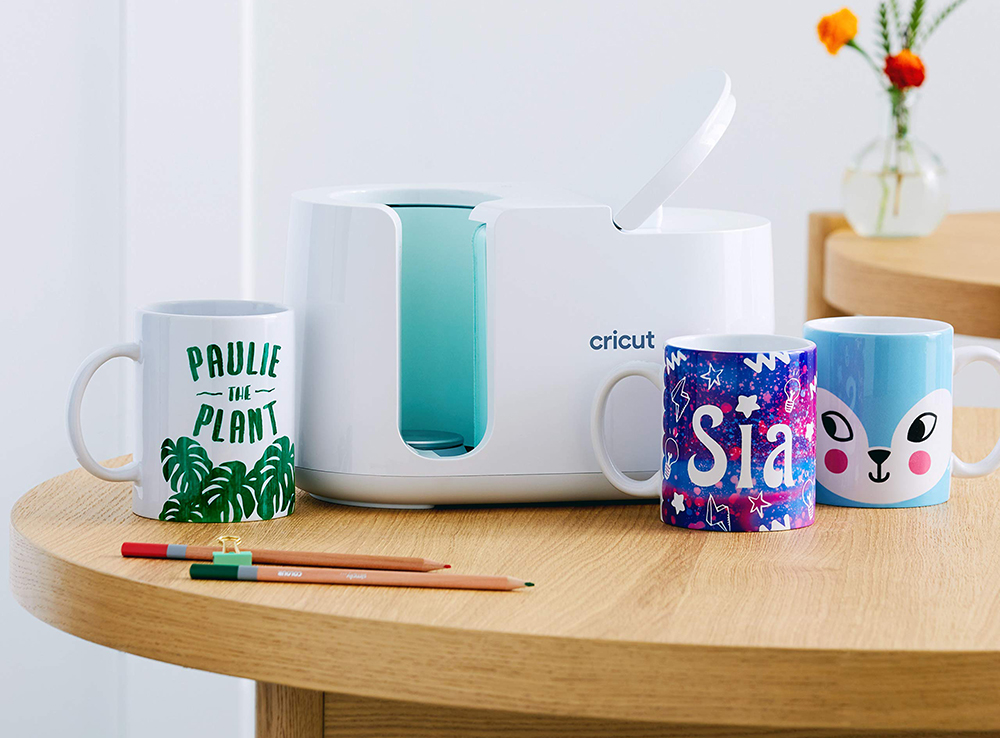

Three factors govern the operation of a heat press machine which helps it achieve good results. These factors include temperature, pressure, and time. The settings of these three conditions must be properly configured no matter the type of material you intend to work on – cotton, vinyl, or polyester.
Suppose you’re confused about getting the right configuration when working on a certain fabric. In that case, our heat press temperature chart eliminates the guesswork by laying out the best settings for each type of fabric.
For example, while it’s possible to work on a cotton fabric at a temperature of 380 degrees Fahrenheit, other materials might require more or even less. Aside from this, you also need to find out what temperature the graphics paper needs to be peeled off – hot or cold. We’ll guide you through that in this post.
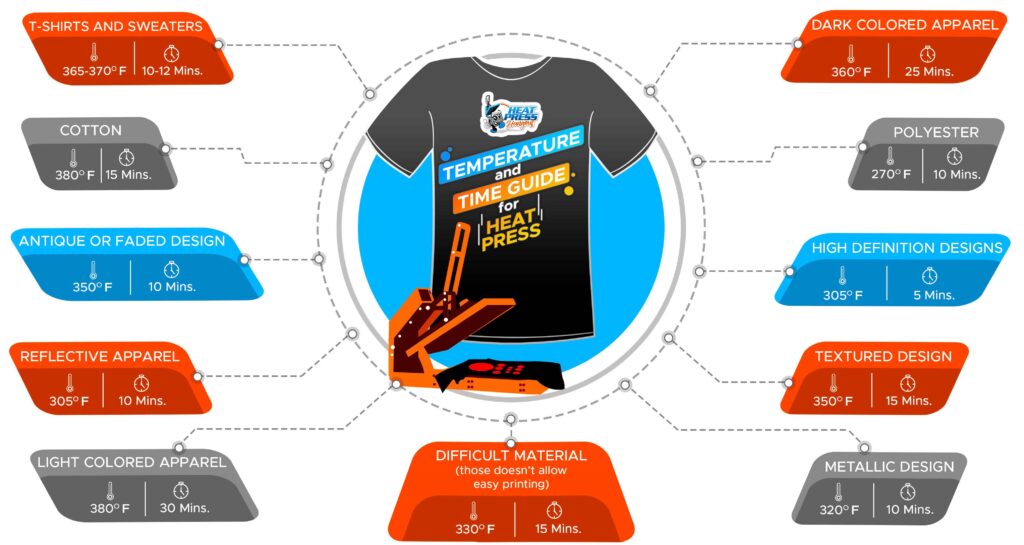
Well, the quality distribution of heat in a heat press machine depends on factors such as pressure, time, and the type of material used. For graphics details to be properly transferred, all of these factors must be kept in mind. These factors will help you achieve a fantastic result.
Generally, more heat is needed when transferring graphics to light-colored fabrics than darker ones in terms of temperature. Hence, if it requires 360 degrees to work on light-colored fabric, expect to spend as low as 330 degrees on dark-colored fabric. Also, it’s vital to ensure the material you’re working on is spotless. It should be free from oil stains or grease.
Usually, the higher the temperature, the more time you have to invest. Also, it should be known that these values are not definite and tend to change from one fabric to the other.
For these reasons, we’ve given you a rundown of the time and temperature requirements needed to work on different types of materials.
When working on polyester material, it’s recommended to set the temperature to low heat Trusted Source Avoiding Heat Press Marks on Polyester Reading this article’s title, you might already be thinking to yourself “But I’ve been printing on polyester for years.” Think again. When it comes to heat printing polyester, there are unique challenges you might not be aware of. www.education.sanmar.com because of the fragile nature of the fabric. The ideal temperature range for polyester is 270 degrees Fahrenheit and 10 minutes of working time. Also, you should know when to peel off the transfer sheet on polyester fabrics. Most transfers are better removed when the material is still hot.
Cotton is the most used fabric for shirt production for two reasons – first, it’s durable, and secondly, it can tolerate a lot of heat Trusted Source Fabric That Can Withstand Iron-Ons Cotton is the best fabric on which to use an iron-on patch or decal. Cotton is a natural fiber and is able to withstand heat up to 400 degrees Fahrenheit. www.ehow.com . When making graphics transfer on cotton fabric, a high amount of heat is needed. A temperature range of about 380 degrees Fahrenheit should be maintained for 15 minutes.
Stretchy materials aren’t the easiest to work on. This is because using the wrong temperature range might cause the graphics to stretch with the material. To get the best result with this type of fabric, ensure you set the machine to 335 degrees Fahrenheit for 15 seconds and allow the graphics paper to get cold before peeling it off.
This setting should be applied to clothing such as swimming trunks, jerseys, and leggings.
When printing with light fabric, you’re guaranteed perfect graphics if you can maintain a temperature range of 385 degrees Fahrenheit for 20–30 minutes. After which, you have to peel off the graphics paper while it’s still hot. Also, when transferring images to light fabrics such as white, ensure you use a transfer paper designed for light-colored fabrics. For this purpose, colors such as yellow, beige, and pink will do.
For dark fabrics such as black, dark blue, and grey, it’s important to use dark-colored transfer paper as well. The recommended temperature for this type of fabric is 365 degrees Fahrenheit and 25 seconds of working time maximum. Graphics need to be transferred under constant high pressure, and the picture paper should be peeled off when hot.
This is the most accessible type of fabric to heat press and an affordable choice as well. It isn’t as fragile as polyester; hence you will need more heat than the former. The best heat press vinyl temperature is 320 degrees Fahrenheit and 10–15 seconds of working time to get a flawless design.
In some cases, it’s best to heat the fabric before applying the graphics, as this will give a smooth finish in the end. Pre-heating help remove wrinkles and other elements on the surface of the shirt.
In the case of Vinyl, there are several presold heat transfer vinyl color catalogs to add to your design collections. There are several manufacturers of these types of products but Caregy premium heat transfer vinyl has proved its worth over time. It can be used to design logos for your t-shirts, hats, pillows as well as bags.
Glitters isn’t a type of fabric; instead, it’s a type of design with sparkles in them. On the surface, it might be challenging to append graphics to them, but that’s not the case provided you stick to the required temperature range of 350 degrees Fahrenheit in 15 seconds. Don’t forget to peel off the paper when it is still hot, as it might be difficult to rip off when it gets cold.
Aside from adjusting the temperature and working time of the heat press machine to the type of material used, you also need to make some settings based on the type of design you want to append to the fabric. Many modern heat press machines come with digital timers and temperature settings that allow you to nail the right configuration in just a few turns.
Most machines come with their heat press temperature guide that walks you through the instructions to achieve a specific look on the fabric. Ensure you go through these directives as all machines are not made to work the same way.
With that being said, here are the general setting to maintain when you create any of the following looks on a piece of fabric.
Well, we’ve seen some of these t-shirts with old faded prints around. They might look out of place in the modern ear but make no mistake; these designs are intentional. To get the old look of vintage t-shirts, you need to use the right setting, which is 350 degrees Fahrenheit at 10 -12 minutes. For the graphics to stick, it needs to be pressed firmly into the fabrics. Unwanted pieces should be peeled off while it’s still hot. Peeling off unwanted pieces while cold will mar whichever result you’re trying to achieve.
When trying to make a full-color finish that comes out well on a garment, the perfect temperature range to stick to is 350 degrees Fahrenheit and a time limit of 12 minutes. The graphics should be hand-pressed using moderate pressure, while the peels should be removed when it’s still hot.
To achieve a metallic finish on a piece of fabric, you need to follow every setting that will give your design a metallic look at the end. Always set your temperature to 320 degrees Fahrenheit within a time frame of 20 minutes. It’s recommended not to move in to peel the fabric immediately while it’s still hot. Wait for a few minutes for the fabrics to cool down before peeling them off.
Reflective designs need to be visible and are mostly used in safety gear. If you’re printing a reflective finish, you need to set your timer to 22 minutes at a temperature range of 305 degrees Fahrenheit.
You need to understand that not all heat press machines will give the result you want when making reflective finishes. Fortunately, you don’t have to break the bank to get a machine that works for this purpose. Machines that create perfect reflective designs are affordable. The most popular choice includes swing-away heat press machines and draw heat press machines.
Some designs do not appear visible under sunlight, they only glow in night light, and their application has to be done with care. The right temperature for a glow-in-the-dark design is 350 degrees Fahrenheit and a timing of 10-12 minutes.
There are a lot of presold glow-in-the-dark heat transfer color sheets in the market. Shoyisi, for instance, offers premium 10 packs color choices to pick from for both Vinyl and glow-in-the-dark designs.
For clients that require high-quality digital prints such as 3D or 2D, you need different temperatures ranges for it. It’s surprising, but this type of design requires lesser temperature than others. Most digital prints are done at a temperature range of 305 degrees Fahrenheit and use just 5 minutes to complete at moderate pressure. Just like most designs, the prints need to be peeled off when it is still hot.
There you have it, that’s our full heat press time and temperature chart. We covered the most popular fabric used in shirt printing. If you read our heat press temperature chart carefully, you will notice that there are diverse temperature range for each type of fabric. This is so because of the texture of these fabrics. While some are soft, others are thick and can withstand high temperatures.
So aside from a heat press machine, some people are curious to know if these graphics images can be pressed on a fabric with a pressing iron. Well, that’s possible, but the advantage of using a heat press machine, even if it is a small-sized option, is to eliminate guesswork. You can easily tune in to the temperature and time interval needed.
